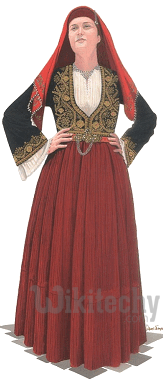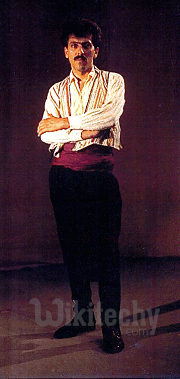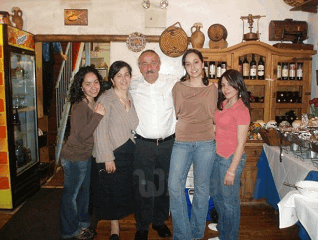
Cyprus Dress Code
Cyprus Details
- Cyprus people - Cypriot
- Cyprus capital / capital of Cyprus - Nicosia
- Cyprus language - Greek, Turkish
- Cyprus population / population of Cyprus - 2013 estimate 1,141,166
- Cyprus currency - Euro (EUR)
BUSINESS DRESS CODE
- The dress codes for business meetings in Cyprus are the same as for most other European countries. It is best to adopt a conservative approach and wear formal business attire, such as a dark colored suit with tie for men and a skirt or pant suit for women.

- Most of the people are real eager to know some of the keyareas related to cyprus such as, cyprus holidays,cyprus hotels,cyprus airways,jobs in cyprus,paphos cyprus,northern cyprus,north cyprus,cyprus travel,limassol cyprus,cyprus weather,limassol,cyprus currency,cyprus mail,capital of cyprus - Nicosia
TRADITIONAL DRESS IN CYPRUS
- The Traditional Garment/Dress code is Cypriot.
- Cypriot clothes gave comfort, beauty and grace to those who used to wear it.
- The materials used to produce traditional Cypriot clothing were cotton and silk of local production.
- The specific cloth used for the outer part of the garment was called “alatzia” (made of cotton), usually with a white base and thin vertical or crossed stripes in traditional colours, deep red, blue, yellow, orange and green. For the casual / everyday men’s shirts and women’s dresses, “alatzies” were usually blue with white stripes.
Women’s Garment
- We basically distinguish three types of garments in women’s wear. These are “sayia”, the dress and the urban or the garment of Nicosia.
- The so called “sayia” was a dress with an opening in the front and at the sides and women used to wear it until the 19th century; a shirt was also worn inside the dress. Women wore long underwear that covered the legs up to the sole. Obviously women of the past had to cover the whole body because of the strict conservative way of life. At the edges the underwear was embroidered. (At the calf of the leg and up to the ankle).
- “Sayia” was made with high quality fabrics like damask or silk woven with gold thread. They also used silk striped fabric from Syria, called “sam alatzia”, which local weavers copied. “Sayia” slightly differed from place to place.

- “Sayia” was established as “Karpasitiki” (an area of eastern Cyprus)The dress was a garment with a waist or pleats and was worn by women in rural areas of Cyprus, especially in the plains and mountains. They used to wear this with slightly different variations depending on the area and its use. For example, in the mountains, they wore dark colors whereas in the plains, they wore more lively natural colors. There was also variety in the embroidery of the cleavage, (“trachilia”) that was necessary for breastfeeding.
- Women used to wear an embroidered apron with the dress; however they preferred a simple apron with everyday clothes.
- The urban or the garment of Nicosia was worn in the 2nd half of the 19th century. It included a wide silk skirt, a short tight jacket with sleeves, a shirt and a fez or shawl.
- On the head they wore a fez with a rich ‘alokoto’ or a shawl with a bow at the side.
- On the head they used to tie a shawl which held back the hair and ended in a bow at one side so it allowed a lacy material, “pipila” to show.
- The young women divided their hair in the middle and styled them into two long braids. (“Vroulia”)
- As far as the wedding costume is concerned, in big villages in Cyprus they used the garment of the city, whereas in rural places they used the dress with the addition of jewelry and a red scarf which distinguished the bride from the other female guests
- In Karpasia the wedding dress was made of “Alatzia” in brown colour. It also had rich appliqué embroidery in gold thread and pieces of coloured felt and a silk shirt was exposed under “sayia”. The underwear that reached the legs had embroidery made by a loom or was handmade.
- The jewelry completed the celebratory garment like in all other parts of Cyprus; these were chains, crosses, necklaces, golden earrings, bracelets and rings.
Men’s Garment
- Traditional Trousers (“Vraka”): It was produced by a thick “thimito”, a cotton handmade cloth; they sewed and used enough pieces so that it looked tufted. According to a traditional Cypriot song, “Saranta (40) pihes thimito ekaman mou mia vraka…” the cloth used is mentioned thus emphasizing the richness of the trousers. The cloth with which they used to make the trousers was always white and specialized dyers used to color them, usually black. On the upper part there were creases (prosiasti) through which a long lace passed and used to tie the trousers. This lace was usually made of wick (“fitili”) and it was called “vrakozoni”.

- Shirt:The shirts were usually woven and made of silk, dark colored fabric that was sewed by seamstresses. They also used other fabrics that were cheaper to make the shirts. In the old days the shirts did not have collars; however they gradually started to add collars.The waistcoat or “zimbouni” was like the jacket of the whole garment and was made like the women’s outer garment, with “alatzia”, in different variations.
- It was embroidered with colorful designs, whereas the everyday waistcoats were dark colored and simple. The urban waistcoats were made of wool black fabric or even made of velvet and were richly embroidered with a metallic wire.
- The wedding waistcoat was usually made of dark colored velvet and the back had colorful embroideries of birds and lions. Under the waistcoat they used to wear a cotton shirt for everyday whereas on Sundays they chose one made of silk.
- On the head men wore a fez and sometimes they added a shawl that was tied at the side.
- Belt or “Zostra”:This was a woolen belt; usually black with red stripes, with a width of about 20cm and 8-10 feet height with woven tassels at the edges. The belt was worn around the waist to cover the cover and for good appearance.
- On the belt or girdle (zostra), other than hiding their dagger (tsiakkoudi), they used to either tie a knitted purse or hid a separate purse that they bought.
- Socks or “klatses”:Most men wore socks only during the winter; only a few wore socks all year round that had to be black and came up to the knee. Some wore socks made of wool; in particular, women used lamb’s wool to make them.
- Underwear:The underwear was like the traditional Cypriot trousers (vraka) but it was white like flannel and made of cotton or kapok. The underwear was up to the knee and had laces at the edges that were tied around it. It was fashionable, if the underwear was exposed, to be 1-2 cm longer than the traditional trousers (“vraka”).
- Boots:The shepherds and many farmers used to wear boots made by shoemakers. These boots had thick nails underneath and they were very heavy. Others used to wear “skarpes”, thick shoes without laces. The wealthy and those of higher status wore the so-called “frangopodines”. They were made of leather and could be dyed. These are the boots that dancers wear today during performances.
- Over coat or coat:In the past coats were very heavy and the English exported them to Cyprus. They used to call these coats “kapottous”.
- Hats:Some men used to wear a hat/cap called “kasketo”. These hats were made of cashmere and had an inside lining. In the villages they wore a black shawl but some used to wear a straw hat too. A few men wore a casque or “rempoublica”.
- The jewelry that completed the men’s garment were the watch, the chain and the rings, mostly worn by those that could afford them.
CLOTHES PEOPLE WEAR IN CYPRUS
- People in Cyprus, also known as Cypriots, wear clothing considered modern as of 2015, including jeans, t-shirts, cotton leggings for women and tailored suits for professionals. Cypriots do not often wear traditional clothing except when participating in weddings or festivals and also for northern cyprus holiday, south cyprus holidays, inapa cyprus holidays, north cyprus dating,greece and cyprus travel, ayia napa.
- People in Cyprus, also known as Cypriots, wear clothing considered modern as of 2015, including jeans, t-shirts, cotton leggings for women and tailored suits for professionals. Cypriots do not often wear traditional clothing except when participating in weddings or festivals.
- Tradition Cypriot clothing consists of cotton and silk produced on the island of Cyprus. The cloth used for outer garments is called "alatzia" and features a white base with thin vertical or crossed stripes in red, blue, yellow, orange or green. Men's traditional trousers, known as "vraka," are made with white cloth dyed black and are sown together from several individual pieces so as to look tufted. Traditional shirts are hand-woven out of silk by professional seamstresses.
- Traditional waist coasts can be either dark-colored or simple or feature elaborate designs. Men also wear a wedding waistcoat on their wedding day, a woolen belt known as a "zostra," knee-high socks, boots and a hat made of cashmere or straw. Traditional Cypriot women's clothing includes the "saiya," a dress worn with a shirt, a formal dress and "the urban": a wide silk shirt, a short-sleeved jacket and a fez or shawl. For their weddings, Cypriot women in big cities tend to wear the urban, while those in rural areas don a traditional dress.
- Traditional waist coasts can be either dark-colored or simple or feature elaborate designs. Men also wear a wedding waistcoat on their wedding day, a woolen belt known as a "zostra," knee-high socks, boots and a hat made of cashmere or straw. Traditional Cypriot women's clothing includes the "saiya," a dress worn with a shirt, a formal dress and "the urban": a wide silk shirt, a short-sleeved jacket and a fez or shawl. For their weddings, Cypriot women in big cities tend to wear the urban, while those in rural areas don a traditional dress.

